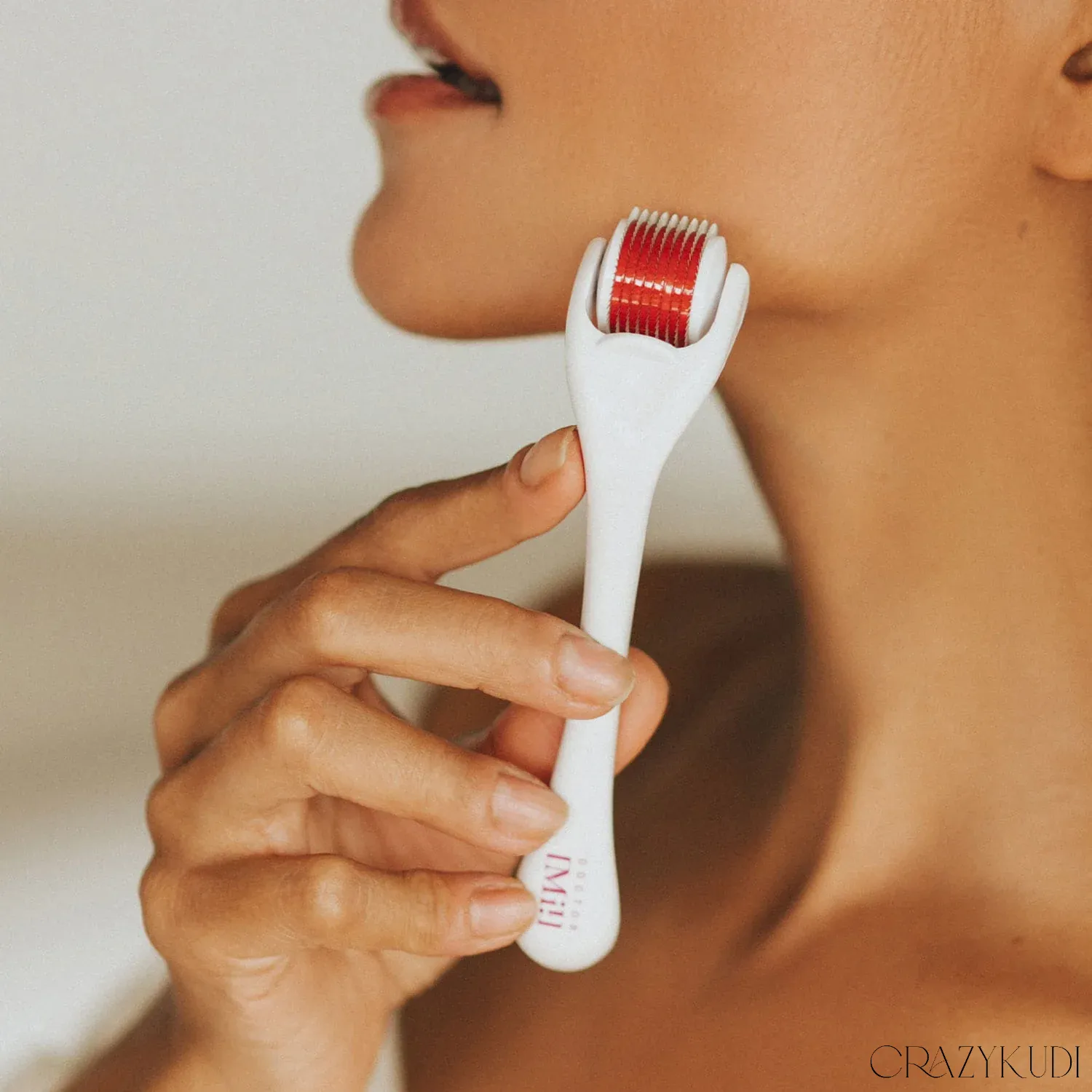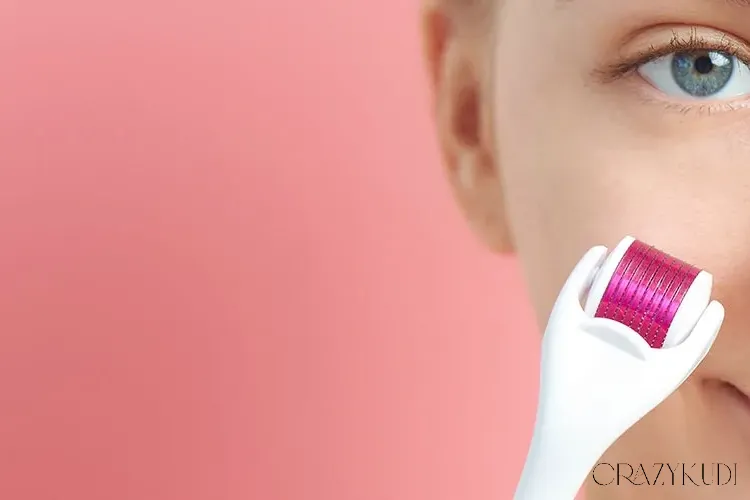The quest for smoother, firmer, more radiant skin has led to the rise of various at-home beauty devices, and dermarollers are certainly among the most popular and talked-about. As a board-certified dermatologist, I frequently get questions about these handheld devices covered in tiny needles. The allure is understandable – the promise of professional-level results like improved texture, reduced fine lines, and enhanced product absorption, all from the comfort of your own bathroom.
However, it is absolutely crucial to approach at-home dermarolling with caution, realistic expectations, and a thorough understanding of the potential risks. While the underlying principle is borrowed from professional microneedling treatments, the execution and safety profile are vastly different. Let's break down what dermarolling is, its theoretical benefits, the significant differences from in-office procedures, and the essential safety measures you must take if you consider trying it.
The Theory: How is Dermarolling Supposed to Work?
Dermarolling is a form of microneedling. The device features numerous small needles that, when rolled across the skin, create microscopic punctures or channels. This process is theorized to work in two main ways:
- Stimulating Collagen (Collagen Induction Therapy - CIT): This is the primary mechanism behind professional microneedling. The controlled micro-injuries trigger the skin's natural wound-healing response. This cascade involves releasing growth factors and stimulating fibroblasts to produce new collagen and elastin, leading to improved skin firmness, texture, and reduced appearance of scars and wrinkles over time. Crucially, significant collagen induction typically requires needles that penetrate deeper into the dermis (usually 0.5mm or longer), a depth generally NOT considered safe for unsupervised at-home use.
- Enhancing Product Penetration: The micro-channels created by the needles can temporarily increase the absorption of topical skincare products applied immediately afterward.
Also read: Ready for Radiance? A Dermatologist Explains 6 Signs It Might Be Time for a Chemical Peel
Potential (Limited) Benefits of At-Home Dermarolling:
Given the very short needle lengths appropriate for home use (typically 0.2mm to 0.3mm, which barely reach the epidermis or the very top of the dermis), the primary potential benefit is likely enhanced absorption of skincare ingredients. Any effect on collagen production with these superficial depths is likely minimal to negligible compared to professional treatments. Some users might notice a temporary plumping effect due to mild inflammation or improved hydration from better product absorption, leading to a perception of smoother skin or slightly reduced fine lines.
The CRITICAL Difference: At-Home vs. Professional Microneedling
It's vital not to equate at-home dermarolling with professional microneedling performed in a dermatologist's office:
- Needle Length & Depth: Professional devices use longer needles (0.5mm to 2.5mm+) tailored to the specific treatment area and goal, reaching the dermis where collagen remodeling occurs effectively. At-home rollers use much shorter needles primarily affecting the epidermis.
- Mechanism & Technique: Professional devices often use motorized pens with needles that penetrate vertically at controlled depths and speeds, minimizing epidermal tearing. Rollers, especially if used incorrectly, can create dragging or tearing micro-injuries.
- Sterility & Safety: Medical clinics adhere to strict sterilization protocols. At-home sterility relies entirely on the user, significantly increasing infection risk.
- Goals: Professional treatments aim for significant collagen induction to treat scars, wrinkles, and textural issues. At-home rolling primarily aims for enhanced product absorption.
- Risk Management: Professionals are trained to manage potential side effects and complications.
The Significant Risks of At-Home Dermarolling – PLEASE READ CAREFULLY:
This is where my caution as a dermatologist is strongest. Improper use can lead to serious problems:
- INFECTION: This is the biggest risk. Rolling non-sterile needles over non-sterile skin introduces bacteria into micro-wounds. This can lead to bacterial, fungal, or even viral (like herpes simplex reactivation) infections, some potentially serious.
- SCARRING: Using dull needles, applying excessive pressure, rolling too aggressively, or using needles that are too long can cause trauma leading to permanent scarring, especially hypertrophic or keloid scars in predisposed individuals.
- POST-INFLAMMATORY HYPERPIGMENTATION (PIH): Creating excessive inflammation or trauma, especially in individuals with skin of color, can lead to persistent dark spots that are difficult to treat.
- AGGRAVATING SKIN CONDITIONS: Rolling over active acne can spread bacteria and worsen breakouts. It can severely irritate conditions like rosacea, eczema, or psoriasis.
- ALLERGIC REACTIONS/IRRITATION: Applying potent active ingredients (like retinoids or acids) immediately after rolling can lead to severe irritation or allergic reactions due to excessively deep penetration.
- GRANULOMAS: Foreign body reactions to microscopic particles introduced into the skin.

If You STILL Choose to Dermaroll at Home (Harm Reduction Guidelines):
While I generally advise against it due to the risks, if you are determined to try at-home dermarolling, you must prioritize safety above all else. Follow these guidelines strictly:
- Choose the RIGHT Needle Length: Stick to 0.2mm or 0.3mm MAXIMUM. Anything longer significantly increases risks of bleeding, scarring, and infection in untrained hands and should be reserved for professionals.
- Invest in a Quality Device: Avoid cheap, low-quality rollers. Look for reputable brands with properly manufactured, sharp, stainless steel or titanium needles.
- STERILIZATION IS PARAMOUNT:
- Before Use: Thoroughly wash your hands and face with a gentle cleanser. Cleanse the roller head by soaking it in 70% isopropyl alcohol for at least 5-10 minutes. Let it air dry completely on a clean paper towel.
- After Use: Rinse the roller under hot running water immediately. Then, soak again in 70% isopropyl alcohol for 5-10 minutes. Let it air dry completely before storing it back in its protective case. Never share your roller.
- Proper Technique:
- Use very light pressure – you are not trying to aerate a lawn.
- Roll gently in sections: vertically, horizontally, and diagonally (like an asterisk *) over each small area, lifting the roller between direction changes. Avoid dragging.
- Do NOT roll over active acne, cold sores, warts, open wounds, irritated skin, or areas with rosacea or eczema flares.
- Limit sessions to once every 1-2 weeks at most for these superficial needle lengths to allow skin recovery.
- Post-Rolling Care:
- Apply only gentle, bland, hydrating serums immediately after (like hyaluronic acid). AVOID potent actives like retinoids, vitamin C serums, AHAs/BHAs, or anything potentially irritating for at least 24 hours.
- Apply a gentle moisturizer.
- Strict sun protection (SPF 30+) is crucial the next day and ongoing, as the skin will be more sensitive.
- Replace Your Roller Regularly: Needles dull quickly. Using a dull roller increases the risk of tearing the skin and causing damage. Replace the roller head after 10-15 uses, or sooner if you notice any bent or damaged needles.
Also read: Hard Lumps Under Your Skin? A Dermatologist Explains Potential Causes & When to Worry
When to Absolutely See a Dermatologist:
- If you want noticeable improvement in scars, wrinkles, or significant textural issues (professional treatments are needed).
- If you develop any signs of infection (increasing redness, swelling, pain, pus, fever).
- If you experience persistent irritation, rash, breakouts, or hyperpigmentation after rolling.
- If you are unsure whether dermarolling is appropriate for your skin type or condition.
Conclusion:
At-home dermarolling taps into the science of microneedling but operates at a much more superficial level with significantly higher risks if performed improperly. While it might offer a slight boost in product absorption for some, it cannot replicate the collagen-stimulating effects of professional treatments and carries real dangers of infection, scarring, and irritation. If you choose to proceed, prioritize impeccable hygiene, use only very short needles (≤0.3mm), be gentle, and understand the limitations and risks. For meaningful and safe results targeting specific skin concerns, professional microneedling or other treatments administered by a board-certified dermatologist remain the gold standard.

